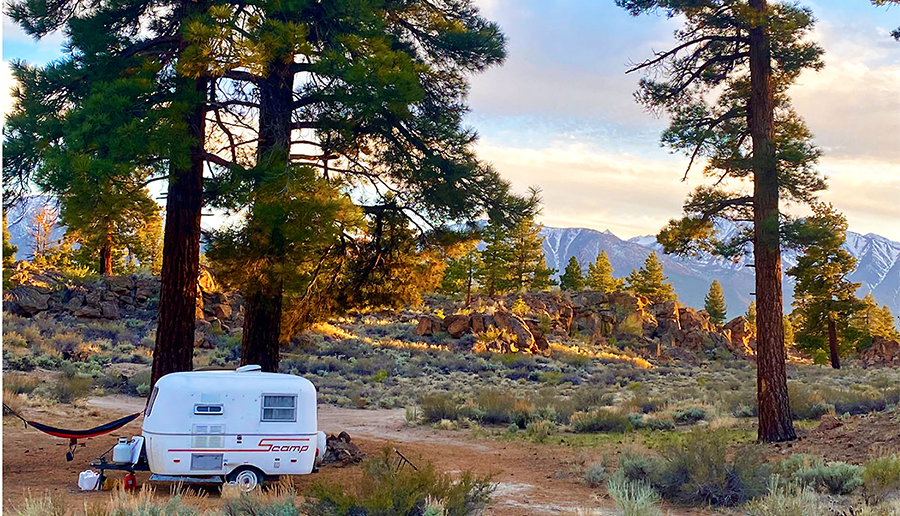<span style="color: #a1a1a1;">The U.S. Interior Dept. released its annual National Park Service Visitor Spending Effects Report for 2019 and found that over 327.5 million park visitors spent nearly $21.0 billion in local gateway regions in 2019 while visiting National Park Service lands across the country.
The report uses four types of regional economic effects from visits to national parks.
- The Jobs classification is used to measure annualized full- and part-time jobs that are supported by NPS visitor spending.
- Labor Income includes employee wages, salaries and payroll benefits, as well as the incomes of proprietors that are supported by NPS visitor spending.
- Value-Added measures the contribution of NPS visitor spending to the Gross Domestic Product (GDP) of a regional economy. Value added is equal to the difference between the amount an industry sells a product for and the production cost of the product.
- Economic Output is a measure of the total estimated value of the production of goods and services supported by NPS visitor spending. Economic output is the sum of all intermediate sales (business-to-business) and final demand (sales to consumers and exports).
The nearly $21 billion in expenditures supported a total of 340,500 Jobs, $14.1 billion in Labor Income, $24.3 billion in Value Added, and $41.7 billion in Economic Output in the national economy. The report indicated the lodging sector saw the highest direct effects, with $7.1 billion in Economic Output directly contributed to this sector nationally. The restaurant sector saw the next greatest effects, with $4.2 billion in Economic Output directly contributed to this sector nationally.
The visits to America’s national parks in 2019 grew 2.9 percent, or 9 million visits, to 327,516,619 recreation visits, exceeding the 300 million mark for the fifth consecutive year. The visitation total for the year is the third-highest since record-keeping began in 1904. In 2019, 33 parks set new records for annual recreation visits, and 3 parks (Golden Gate National Recreation Area, Blue Ridge Parkway, and Great Smoky Mountains National Park) received more than 12 million recreation visits each. Total party days/nights are estimated for each park unit and for each visitor segment. In 2019, visitor parties accounted for an estimated 132.1 million party days/nights. Lodging outside the park accounted for the largest portion of party days/nights at 33 percent of the total followed by local day trips (21 percent) and non-local day-trips (21 percent). Camping and lodging inside NPS units accounted for just over 3 percent of total party days/nights spent in local gateway regions.
Visitor spending was estimated for each park unit and for each visitor segment based on park and segment-specific expenditure profiles. Total visitor spending is equal to total party days/nights multiplied by spending per party per day/night. The report estimated that lodging expenses account for the largest share of visitor spending. In 2019, park visitors spent $7.1 billion on lodging in hotels, motels, bed and breakfasts, and other specialty lodging and an additional $0.5 billion on camping fees. Food expenses account for the next largest share of expenditures. In 2019, park visitors spent $4.2 billion on dining at restaurants and bars and an additional $1.4 billion purchasing food at grocery and convenience stores.

Source: U.S. Dept. of Interior, National Park Visitor Spending Effects Report
The graphic above represents the distribution of total party days/nights by visitor segment. Total party days/nights measure the number of days (for day trips) and nights (for overnight trips) that visitor groups spend in gateway regions while visiting NPS sites. In 2019, visitor groups accounted for 132.1 million party days/nights.
The secondary effects of visitor spending supported an estimated additional 135,700 Jobs, $7.9 billion in Labor Income, $13.6 billion in Value Added, and $24.5 billion in Economic Output in the national economy. Economic contributions are estimated by multiplying total (local and non-local) visitor spending by park-level (local gateway region) economic multipliers. Table A-2 provides estimates of the percent of visitor spending for each park that is made by non-local visitors.
The National Park System includes 419 areas covering more than 84 million acres. Park units can be found in every state, the District of Columbia, American Samoa, Guam, Puerto Rico, and the U.S. Virgin Islands.
















